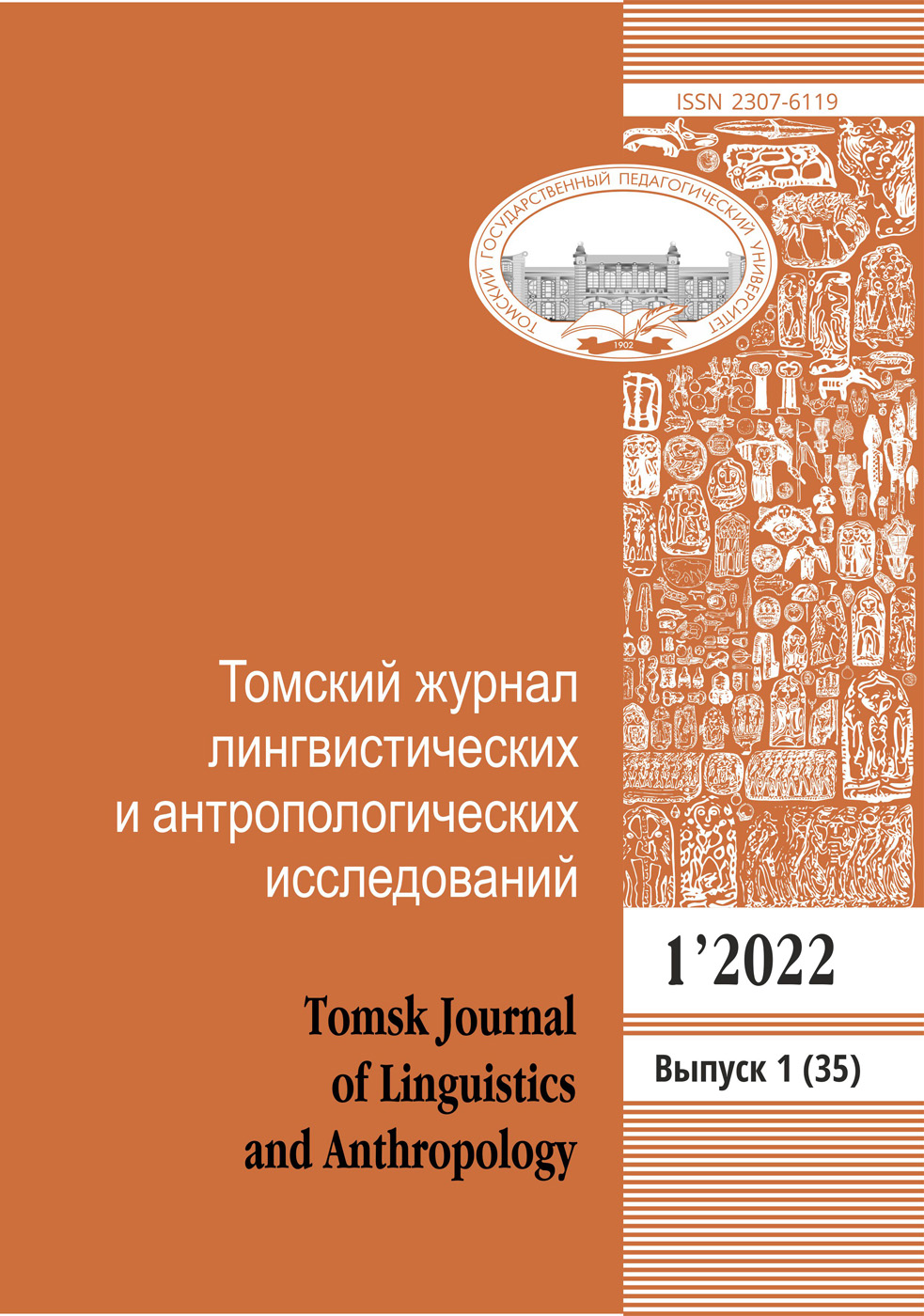EPISTOLARY FORMS IN N. M. KARAMZIN’S MAGAZINES: “THE MOSCOW MAGAZINE” AND “BULLETIN OF EUROPE”
The epistolary forms which entered a context of “The Moscow magazine” and “The Bulletin of Europe” are considered as an embodiment of the concept of N. M. Karamzin – the publisher, as a reprezentant of his creative method. N. M. Karamzin actively develops poetics of the private, friendly letter in the journalistic and publishing practice, thus the poetics of epistolary publications in Karamzin magazines is conformable to poetics of his private letters. In magazines, also as well as in private letters, estimates and judgments of the publisher, his image itself organize reader’s perception, play a sample role, immerse in the Karamzin sphere of spiritual and intellectual aspirations. The letter as a plot forming element of Karamzin magazines allowed their publisher to come into direct contact with the reader, and “someone else’s” letters became remarks in the dialogue organized by the publisher, a reason for publishing reflections. The letter becomes an ideal form of creation of the addressee – the reader of the magazine as in it the behavioural standard is formed. Certain dynamics of epistolary poetics from “The Moscow magazine” to “the Bulletin of Europe” is noted. The conclusion is that the epistolary is the major esthetic category, it in many respects causes deep internal unity of editions of N. M. Karamzin.
Keywords: epistolary form, magazine, N. M. Karamzin, “The Moscow magazine”, “Bulletin of Europe”
References:
1. Goncharova O. M. Natsional’naya traditsiya i “novaya Rossiya” v literaturnom soznanii vtoroy poloviny XVIII veka. Avtoref. dis. dokt. fi lol. nauk [National tradition and “new Russia” in literary consciousness of the second half of the XVIII century. Abstract of thesis dokt. of phil. sci.]. St. Petersburg, 2004. 39 p. (in Russian).
2. Alpatova T. A. Izdatel’skaya strategiya N. M. Karamzina i problemy poetiki povestvovaniya [Publishing strategy of N. M. Karamzin and problem of poetics of a narration]. FILOLOGOS – PHLOLOGOS, 2012, no. 13 (2), pp. 5–10 (in Russian).
3. Kur’yanovich A. V. Epistolyarnaya kartina mira: k voprosu opredeleniya ponyatiya [Epistolary picture of the world: to a question of defi nition of concept]. Vestnik Tomskogo gosudarstvennogo pedagogicheskogo universiteta – TSPU Bulletin, 2014, vol. 2 (143), рp. 16–20 (in Russian).
4. Marasimova E. N. Psikhologiya elity rossiyskogo dvoryanstva posledney treti XVIII veka (Po materialam perepiski) [Psychology of elite of the Russian nobility of the last third of the XVIII century (On correspondence materials)]. Moscow, ROSSPEN Publ., 1999. 302 p. (in Russian).
5. Frik T. B. “Sovremennik” A. S. Pushkina kak edinyy tekst [A. S. Pushkin’s “Contemporary” as uniform text: monograph]. Tomsk, Publ. of Tomsk polytechnic university, 2009. 192 p. (in Russian).
6. Sapchenko L. A. Epistolyarnyy zhanr v karamzinskom nasledii [Epistolary genre in Karamzin heritage]. Gumanizatsiya i gumanitarizatsiya obrazovaniya XXI veka. Problemy sovremennogo obrazovaniya: Materialy 13-y Mezhdunarodnoy nauchno-metodicheskoy konferentsii pamyati I. N. Ul’yanova [Humanization and humanitarization of formation of the XXI century. Problems of modern education: Materials of the 13th International scientifi c and methodical conference in memory of I. N. Ulyanov]. Ul’yanovsk, 2012. Pp. 75–80 (in Russian).
7. Moskovskiy zhurnal [Moscow Journal]. 1791. Vol. 1–3 (in Russian).
8. Sukaylo V. A. Trudy i dni Ivana Dmitrieva. Kniga 1. Khronika [Works and days of Ivan Dmitriyev: Book 1. Chronicle]. Ul’yanovsk, Korporatsiya tekhnologiy prodvizheniya Publ., 2010. 960 р. (in Russian).
9. Vinogradov V. V. “Sel’skiy prazdnik i svad’ba” (Neizvestnoye pis’mo Karamzina k drugu iz derevni Blagopoluchnoy) [“A rural holiday and a wedding” (The unknown letter of Karamzin to the friend from the village Safe)]. Vinogradov V. V. Problema avtorstva i teoriya stiley [Problem of authorship and theory of styles]. Moscow, Gos. izd-vo khud. lit. Publ., 1961, pр. 339–365 (in Russian).
10. Vestnik Evropy, izdavaemyy Nikolaem Karamzinym [Europe Bulletin, published by Nikolay Karamzin]. 1802–1803. XI–XII. 1802–1803. Vol. I–XII (in Russian).
11. Russkaya starina [Russian old]. 1884. Vol. XLII. 714 p. (in Russian).
12. Kiselev V. S. Stat’i po teorii i istorii metateksta (na materiale russkoy prozy kontsa XVIII – pervoy treti XIX veka) [Articles according to the theory and history of the metatext (on material of the Russian prose of the end of XVIII – the fi rst third of the XIX century)]. Tomsk, TSU Publ., 2004. 108 p. (in Russian).
13. Rudikova N. A. “Russkiy parizhanin” Vasiliy Lyuvovich Pushkin [“The Russian Parisian” Vasily Lyuvovich Pushkin]. Vestnik Tomskogo gosudarstvennogo pedagogicheskogo universiteta – TSPU Bulletin, 2010, vol. 8 (98), рp. 28–32 (in Russian).
14. Kafanova O. B. Bibliografi ya perevodov N. M. Karamzina v “Vestnike Evropy” (1802–1803 gg.) [The bibliography of the translations of N. M. Karamzin in “the Bulletin of Europe” (1802–1803)]. XVIII vek. Sbornik 17 [XVIII century. Collection 17]. St. Petersburg, Nauka Publ., 1991. Pp. 249–280 (in Russian).
Issue: 3, 2016
Series of issue: Issue 3
Rubric: RUSSIAN AND FORREIGN LITERATURE OF THE XIX CENTURY
Pages: 102 — 108
Downloads: 888





